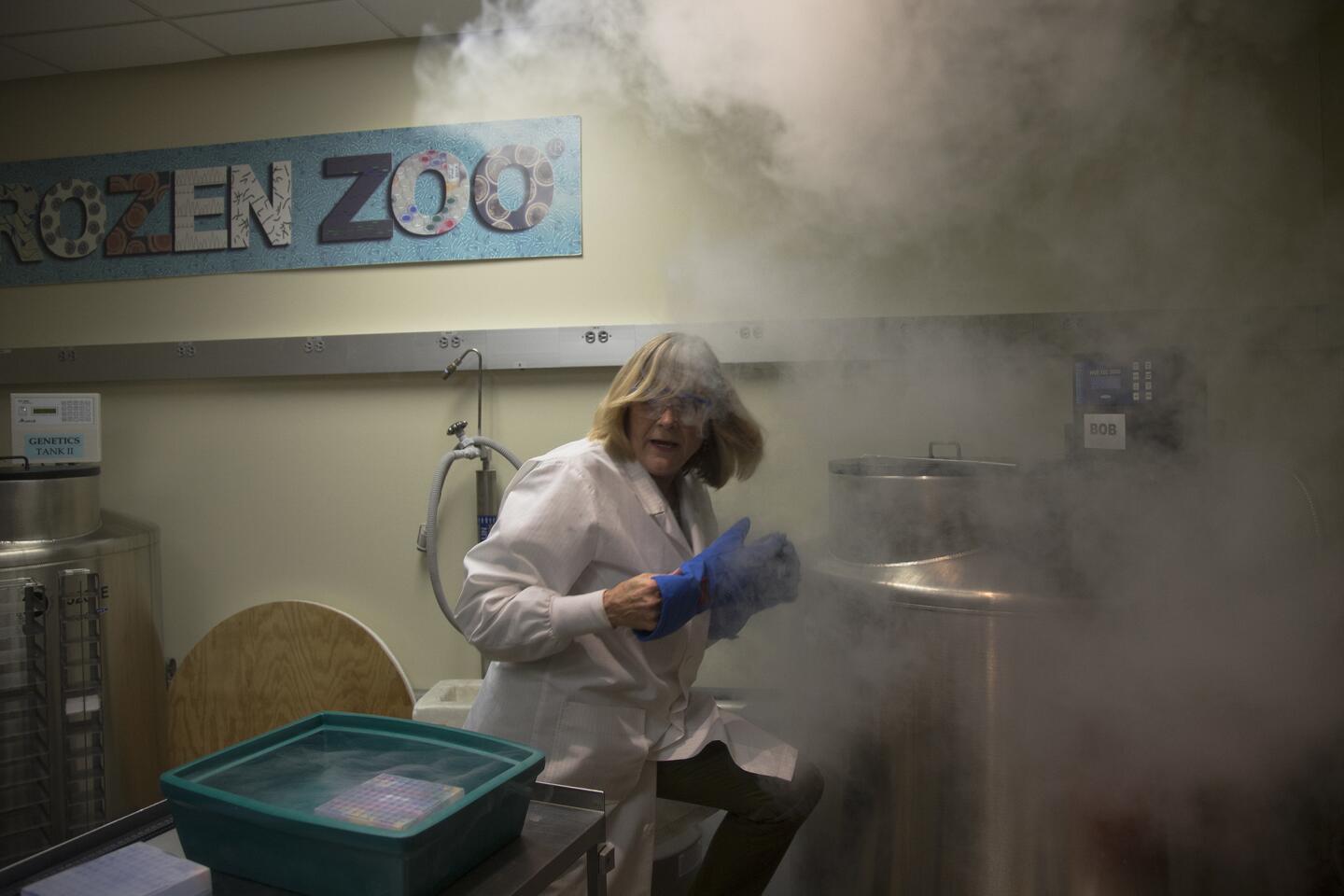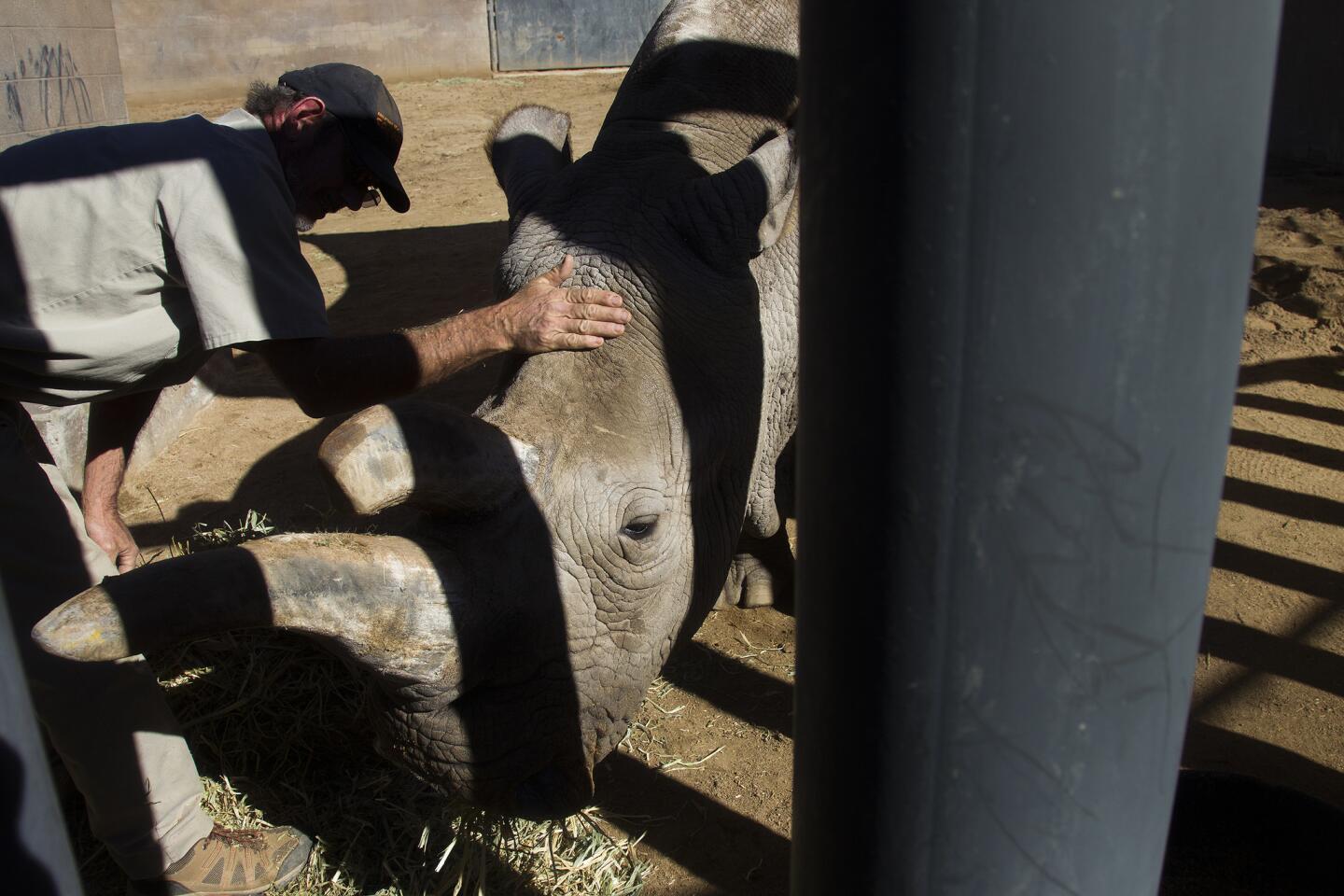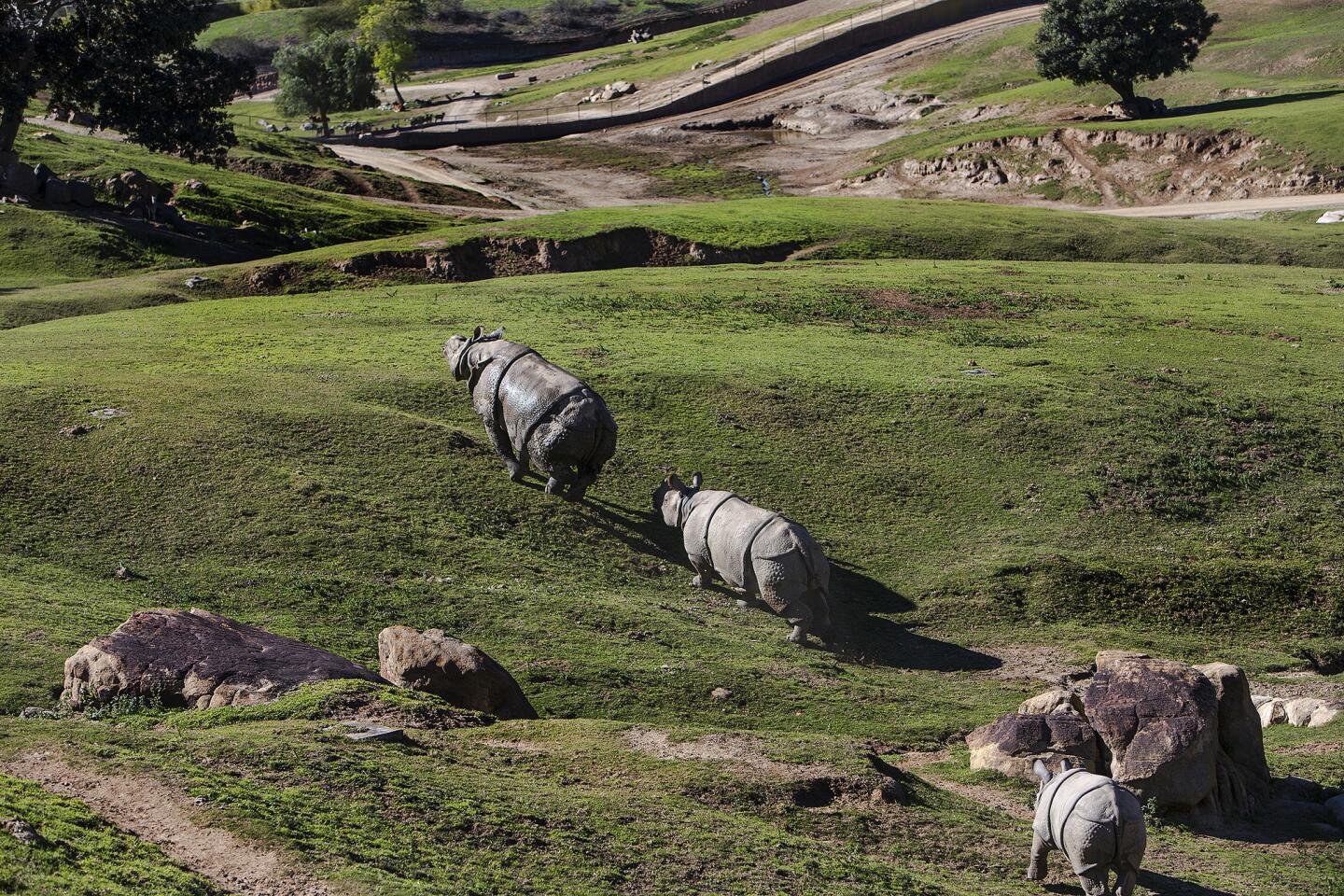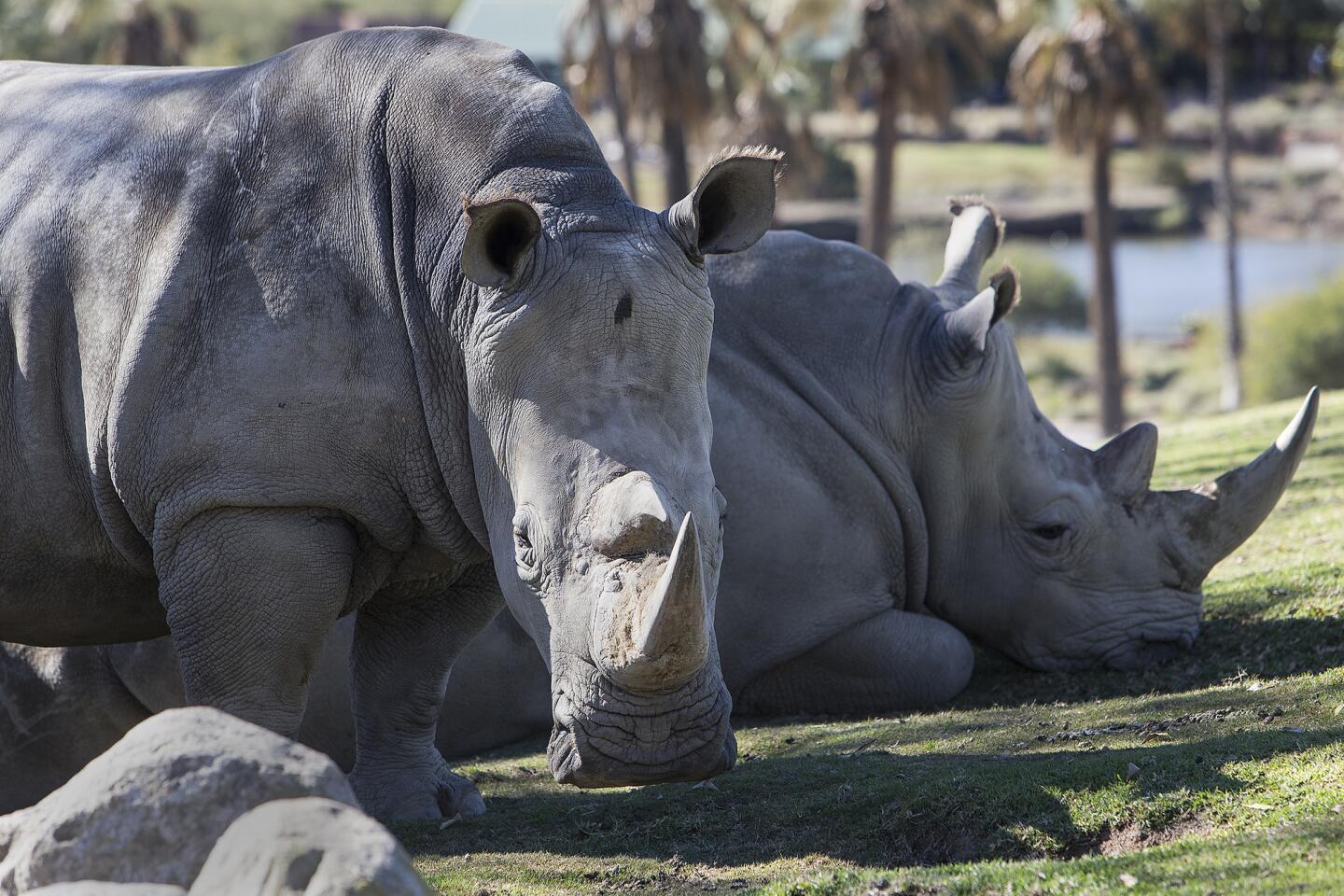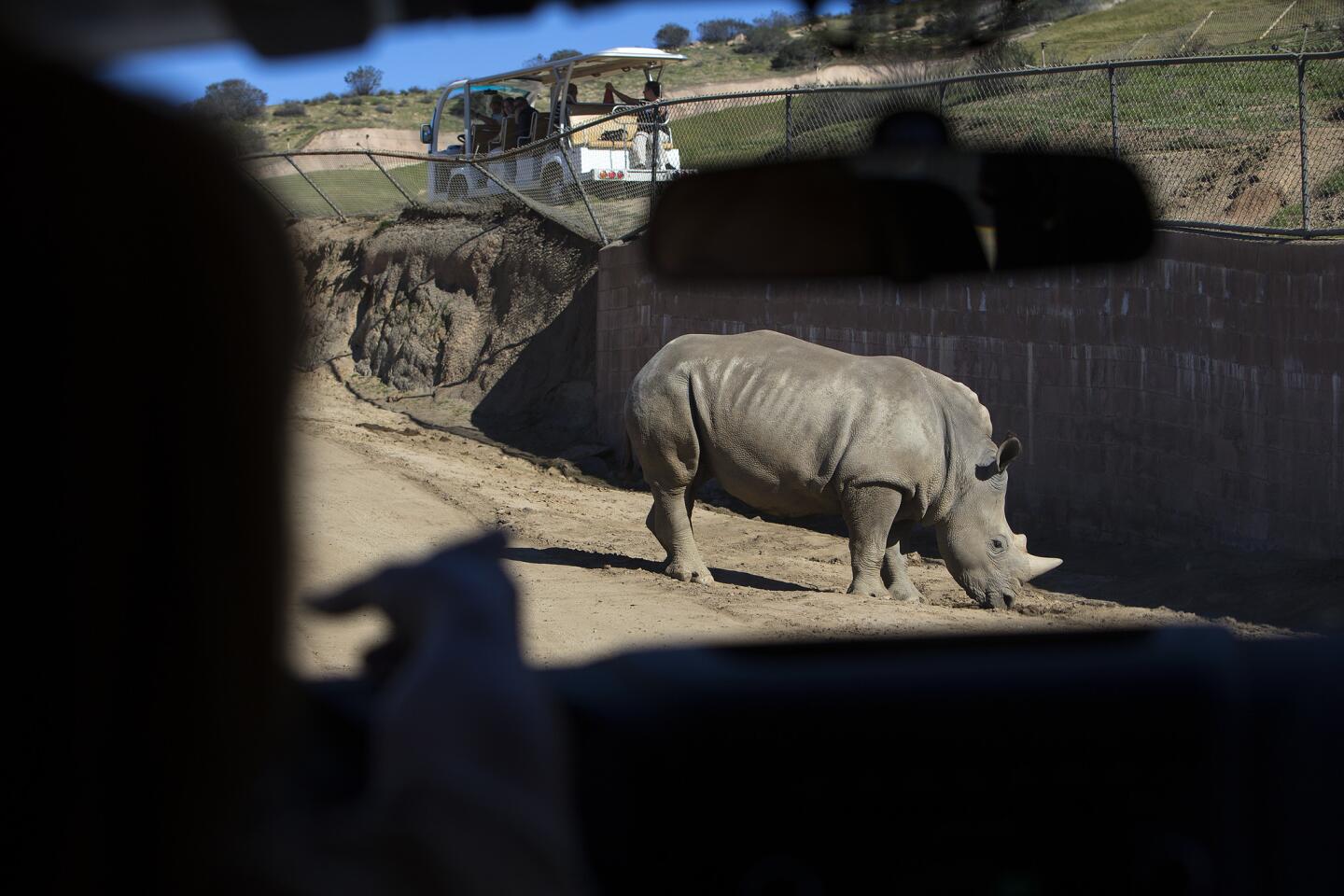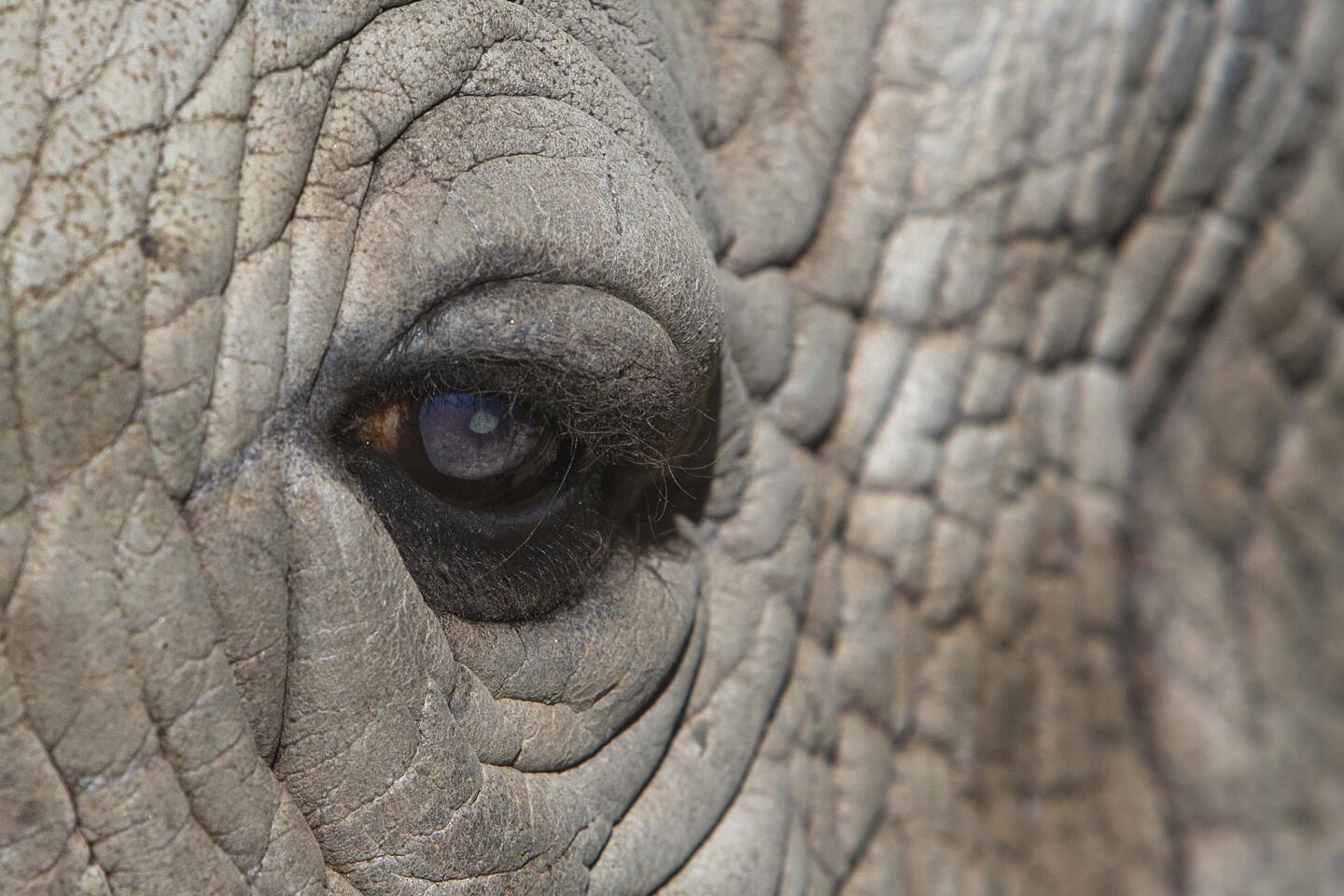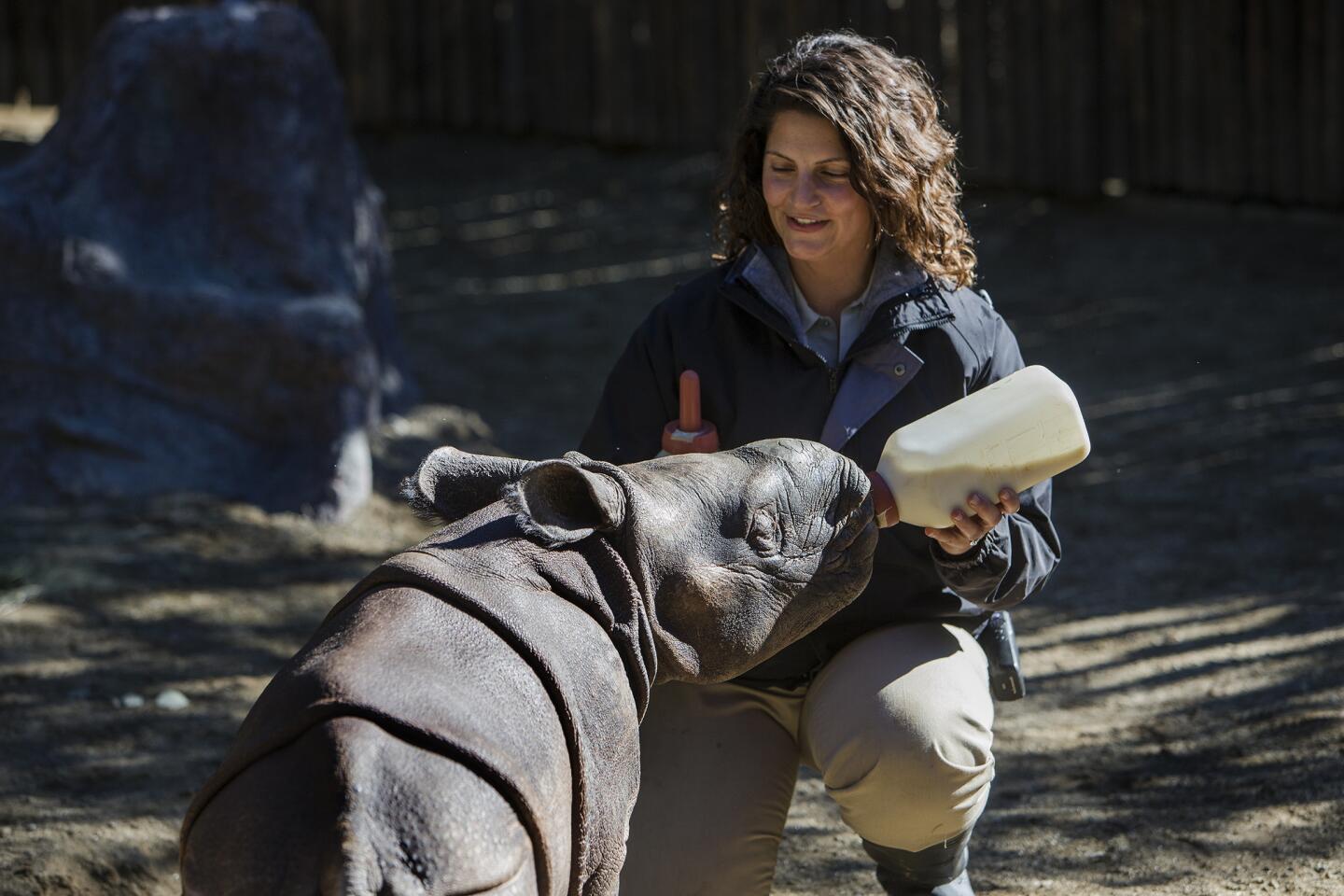Frozen Zoo may hold hope for saving the northern white rhino
- Share via
Reporting from SAN DIEGO — Nola is eating her morning meal of apples and grain and appears ready to take her antibiotic pills. After feeling poorly for a couple of weeks, she is moving around.
This is welcome news to Nola’s devoted keepers at the San Diego Zoo Safari Park. She is one of only five northern white rhinos left on Earth: three of the others are in a preserve in Kenya, and one is in a zoo in the Czech Republic.
Nola’s recent illness, coming just weeks after the unanticipated death of Angalifu, the park’s male northern white rhino, was a pointed reminder of the fragility of her species.
At 40, even with care, Nola is near the end of her expected life span, and breeding is no longer seen as an option. Efforts in Kenya to mate the male and the two females have been unsuccessful.
But scientists working for the zoo’s Institute for Conservation Research say hope may yet exist for the northern white rhino: futuristic technology that might allow it to make a comeback even after the remaining animals are gone.
The strategy — a long shot, researchers acknowledge — involves frozen specimens of reproductive material and a surrogate rhino mother from a different subspecies.
“You have to be optimistic, but you have to be willing to accept that you’re going to fail sometimes,” said Barbara Durrant, director of reproductive physiology at the institute. “This is not for the faint of heart.”
Large tanks at the institute’s Frozen Zoo contain more than 19,000 egg, sperm and tissue samples from 1,200 animals representing 310 species. The tanks are kept at subfreezing temperatures by liquid nitrogen.
The Frozen Zoo has contributed to numerous rescue efforts for other species, including the California condor and the Chinese monal, and provided specimens for DNA studies at other zoos and research institution. Sperm from the Frozen Zoo was sent to the National Zoo in Washington for its panda breeding program.
The Frozen Zoo has sperm from Angalifu; Nola’s eggs will be harvested upon her death, which keepers hope will be years away. But the procedures needed to save Nola’s species do not yet exist and might take years to develop.
In simple terms, they involve in-vitro fertilization using the egg and sperm.The complicated process carries significant risk of damaging the embryo, and it has been tried on rhinos only once, without success. If an embryo were sustained, it would then be transferred to a female southern white rhino, something that has never been attempted.
“It’s sort of a Hail Mary pass,” said Jeanne Loring, director of the Center for Regenerative Medicine at Scripps Research Institute in La Jolla.
“It’s definitely not going to be easy, but it’s possible,” said Loring, who works with the Frozen Zoo. “This is not science fiction.”
How long might it take to perfect the process?
“It’s really a fundraising issue,” Loring said. “If a billionaire comes along and wants to help, maybe five years.”
The institute and its Frozen Zoo — a leader among the handful of “cyto-preservation” centers in the U.S. and England — are housed at the edge of the Safari Park in a modern building that looks like a ski lodge. At the zoo in Balboa Park, where the Frozen Zoo began in 1972, similar tanks keep duplicate samples.
When the zoo’s male panda, Shi Shi, was not interested in the female, Bai Yun, Durrant unlocked the secrets of how to artificially inseminate a panda.
Hua Mei, born in 1999, became the first panda born in captivity in America to survive to adulthood. Among researchers, Durrant is known as “Hua Mei’s father.”
But she also worked on the unsuccessful project to save the po’ouli bird in Hawaii.
“We watched that species go extinct,” she said. “It was heartbreaking. To watch an entire species disappear from the Earth is indescribable; you feel so helpless.”
The dominant methods of species conservation — attempts at captive breeding through artificial and natural means, efforts to stop poaching, expansion of wildland preserves — have failed to arrest the slide of the northern white rhino.
Poaching increased over the last three years after a prominent official in Vietnam claimed that rhino horn ground into a powder and mixed with water cured his hangovers.
Chris Tubbs, a researcher at the institute, is exploring whether the rhino diet in captivity contains certain grains that mimic estrogen and keep rhinos from conceiving.
“Poaching has put a lot of pressure on us,” Tubbs said. “I feel tremendous pressure to get the data to convince managers [worldwide] that we need to change diets.”
Since Nola arrived in 1986 from a zoo in what is now the Czech Republic, she has been a special project for San Diego Zoo scientists, as well as a favorite of her keepers.
She reacts when her name is called and appears to enjoy being scratched behind the ears. “She’s a good girl,” said Jane Kennedy, a lead keeper who has tended Nola for two decades and is now president of the International Rhino Keepers Assn.
Nola has never been pregnant, either in the wild or in captivity. No one is sure why southern white rhinos breed well in captivity but northern white rhinos do not.
The northern white’s reproductive system may just be more complicated than other rhinos’. And then there’s Nola herself. She would seemingly lose interest and walk away after being approached by a male.
Her recent illness threw a scare into her keepers, but after some blood tests and nasal swabs, the veterinarians decided Nola had a sinus infection that could be treated.
Beyond her sinus problem, she has a variety of old-age maladies, including arthritis. The oldest northern white rhino died at age 44.
Nola was recently put back in the 65-acre South African exhibit, where she was greeted by her companion Chuck, a southern white rhino. Although she is no longer a candidate for motherhood, Nola remains an emeritus figure at the Safari Park.
“Our privilege,” Kennedy said, “is that we get to take care of Nola for the rest of her life.”
Twitter: @LATsandiego
More to Read
Sign up for Essential California
The most important California stories and recommendations in your inbox every morning.
You may occasionally receive promotional content from the Los Angeles Times.
